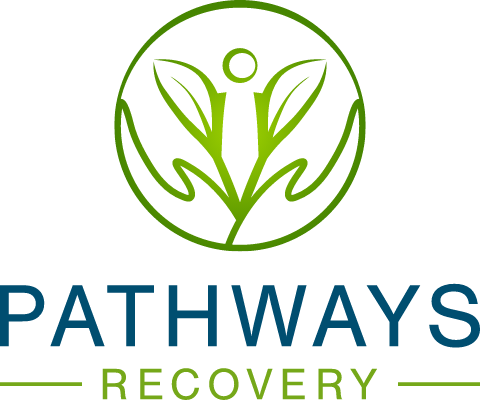Xanax Addiction Treatment at Pathways Recovery
Xanax use is common across the country. As more and more people attempt to deal with the stressors and anxieties associated with everyday life, they may rely on drugs such as Xanax to help them function.
However, Xanax should only be taken if prescribed by a doctor. Using it without a prescription can be dangerous, not to mention it being illegal. It should be noted that if you are struggling with your mental health, help is available. Please visit a doctor to go over any and all options to address your situation.
To this day, addiction is still a problem in the Golden State, and Xanax addiction is included.
Xanax is a type of benzodiazepine or “benzo.” This is a classification of controlled substances commonly prescribed in the U.S. to treat seizures, anxiety, and panic disorders. It is also sometimes used to treat the symptoms of alcohol withdrawal.
Despite Xanax’s many legitimate uses, it is widely misused and can be very dangerous when taken in large quantities over short periods of time. According to The Dawn Report, a 2011 study conducted by the Substance Abuse and Mental Health Services Administration (SAMHSA), the increased risk of misuse climbed alongside an increase in prescriptions nationwide over the decade leading up to the study. The same study found that prescribed drugs like Xanax became increasingly dangerous when combined with other substances.
Xanax is an effective treatment tool when taken as prescribed by a medical doctor. However, the results of Xanax misuse can be drastic and may even lead to dependence or addiction.
Xanax Addiction Treatment: What Are My Options?
If you believe you or a loved one may be suffering from a Xanax addiction, reading this page is a great first step.
From 2015-2016, 5.3 million adults in the U.S. reported misusing a benzodiazepine. You are not alone in your struggle with addiction.
You’re probably wondering, “What are my options for Xanax addiction treatment?” At Pathways Recovery, we can walk you through what to expect when it comes to Xanax addiction treatment, as well as the different types of treatment we offer.

What Is Xanax?
As mentioned above, Xanax is a type of benzodiazepine. In prescribed doses, it is used primarily to treat anxiety and seizures by releasing a chemical that slows down the central nervous system and brain functions.
Xanax typically comes in an oval- or rectangle-shaped pill with the brand and the dose in milligrams printed on it.
A few examples of what Xanax might look like include:
- The 0.25 mg pill is white and oval shaped with “Xanax .25” printed on it
- The 0.5 mg pill is orange and oval shaped with “Xanax .5” printed on it
- The 1 mg pill is blue and oval shaped with “Xanax 1” printed on it
- The 2 mg pill is white and rectangle shaped with “Xanax 2” printed on it
This list is not complete. If you are not sure whether or not a pill you find is Xanax, you can take it to your local pharmacist who should be able to identify it for you.
Is Xanax Legal?
Xanax is a controlled substance. This means that Xanax is legal when it is prescribed and taken as recommended by the doctor that prescribed it. Taking more Xanax than prescribed or purchasing it outside of a prescription is illegal.
The Scope Of Xanax Misuse In The U.S.
The National Institute on Drug Abuse (NIDA) found that from 1996 to 2013, the number of filled prescriptions for benzodiazepines among adults rose by a staggering 67%. Misuse of Xanax is heavily associated with opioids. In fact, in 2016, the CDC issued guidelines recommending that Xanax not be prescribed alongside opioids. The NIDA also found that in 2019, 16% of all opioid overdoses also involved misuse of a benzodiazepine.
As explained in the previous section, prescription Xanax, when taken at the proper dose, can be extremely useful. The drug affects the nervous system and, in prescribed doses, reduces anxiety by moderately slowing down the brain and other bodily functions.
However, when misused, Xanax can lower inhibitions (self-control) and create a false sense of euphoria or extreme happiness, and even numbness throughout the body. Xanax, like many drugs, builds up a physical dependence quickly and can lead to long-term addiction. In the long term, Xanax misuse can change brain chemistry and lead to serious health issues.
In 2020, the Food and Drug Administration (FDA) updated the “Boxed Warning” published on packaging of benzodiazepines because, “abuse and misuse can result in overdose or death, especially when benzodiazepines are combined with other medicines, such as opioid pain relievers, alcohol, or illicit drugs,” highlighting the importance of not misusing Xanax or other benzodiazepines by mixing them with other substances.
Short-Term Effects Of Xanax Misuse
When taken in appropriate, prescribed doses, Xanax can be useful. However, misusing Xanax can have negative side effects. The way Xanax misuse affects a person often depends on multiple factors like the amount taken and the rate at which they took the drug, as well as things like age, weight, and physical health.
Some of the short-term effects of Xanax misuse include:
- Confusion
- Euphoria (extreme happiness)
- Numbness
- Depression
- Fatigue
- Dry mouth
- Impaired thought processes and/or memory
- Lethargy (tiredness)
- Nausea
- Vomiting
- Diarrhea
- Respiratory depression (breathing problems)
- Slurred speech or stuttering
- Stomach cramps, constipation, loss of appetite
- Tremors
- Vision changes
Long-Term Effects Of Xanax Misuse
In the long term, Xanax misuse can have even more serious consequences. The drug can change a person’s brain chemistry, disrupting the natural production of gamma-aminobutyric acid (GABA) in the brain. The brain struggles to produce it naturally after a long period of extreme Xanax use, which is what makes it dangerous to quit using Xanax cold-turkey.
Effects of long-term Xanax misuse include:
- Tolerance build-up
- Changes in brain chemistry
- Increased risk of addiction
- Visual or auditory hallucinations (seeing or hearing things that are not there)
- Mania (increased energy and talkativeness)
- Violent or aggressive behavior
- Suicidal thoughts and actions
- Liver inflammation
- Blurred vision
- Weight and appetite changes
- Dizziness
- Difficulty concentrating even when someone is sober
- Irritability or depression
- Skin rash, yellow skin or eyes

Different Treatment Options For Different Clients
There are many different treatment options for Xanax addiction. Here at Pathways Recovery, we understand that everyone is different. Different treatment options work for different clients. Regardless of the type of treatment you choose, almost all forms of treatment begin with detox.
Xanax And Medically Assisted Detox
Detoxing is the process of getting a drug out of your system. You should not attempt detox on your own. Detox should only be done under the supervision of an experienced, qualified professional. Detoxing from Xanax and other benzos is particularly dangerous and can cause serious and immediate health problems. Because of this, Xanax is typically tapered off of, or slowly used less and less, until a person can safely stop using the substance altogether.
Detox is primarily designed to give clients 24/7 support through the physical and psychological factors that make detox a frustrating and painful process. In some cases, Pathways Recovery does use medically assisted detox to get clients through Xanax detox. Medically assisted detox is used to reduce the dangerous symptoms of withdrawal from Xanax and other benzodiazepines.
Xanax Withdrawal
Withdrawal occurs when the body has physical cravings for a substance that is exiting your system. For the most part, Xanax withdrawal is just uncomfortable, but more serious symptoms like heart palpitations and seizures can be deadly. The severity of a person’s withdrawal symptoms depends largely on factors like how much of the drug they’ve taken or how long they’ve been taking the drug. Additional factors like age and physical health can also impact withdrawal symptoms.
Common Xanax withdrawal symptoms include:
- Irritability
- Nervousness
- Difficulty concentrating
- Sleep disturbance
- Trembling or shaking
- Increased tension
- Anxiety
- Seizures
- Panic attacks
- Abdominal or stomach cramps
- Dry heaving
- Nausea
- Some weight loss
- Hand tremors
- Sweating
- Heart palpitations
- Headache
- Muscular pain and stiffness
Residential Treatment
Pathways Recovery provides three levels of addiction treatment solutions for those battling Xanax addiction, including a benzo detox center, residential treatment for Xanax addiction, and intensive outpatient treatment.
The facility is designed to provide the best possible experience for clients as they work toward recovery. Pathways Recovery staff will work tirelessly to make sure each client is safe and well taken care of.
The detox center provides medically assisted detoxification for those who need it. Our clients will be supported through this entire process with a qualified team available to provide supervision for safety and peace of mind.
After the detox process, clients will enter the residential program to begin the healing process. Pathways Recovery treatment programs are tailored to the unique needs of each client.
Therapy sessions are designed to get to the root cause of addiction, psychiatry is used to focus on known or undiagnosed mental health disorders, and medication-assisted treatment is available if the client needs it.
The third and final part of the process is intensive outpatient treatment, which is perfect for clients transitioning from their residential stay. With three weekly group sessions available, clients can remain connected to the recovery process.
Outpatient treatment is typically the stage of treatment that follows inpatient treatment. However, outpatient treatment is also an option for people who truly cannot do inpatient treatment due to unavoidable work or family duties.
While outpatient treatment does not do as much to give clients the space to focus solely on recovery, the goal is still to offer the necessary support a person needs to overcome their addiction and help them live a life without Xanax.
To learn more about Xanax addiction treatment at Pathways Recovery, call (916) 735-8377.
FAQ:
What symptoms does Xanax fix?
Xanax affects the brain and central nervous system. When legally prescribed, and taken according to that prescription, Xanax is used to treat anxiety, panic disorders, and even seizures. It works by slowing down the brain and other bodily functions, which has a calming effect on the body. Xanax is illegal to buy or consume without a prescription. If you believe Xanax could be helpful for you, talk to your doctor.
How long should you take Xanax?
You should only take Xanax as it is prescribed by your doctor. Xanax is prescribed legally as both a long- and short-term treatment option for anxiety, panic disorders, and seizures. If you have a legal prescription for Xanax and are afraid that you have been taking Xanax for too long, you should talk to your doctor. Whether you are taking Xanax legally or illegally, you should never quit Xanax cold-turkey as it can have dangerous side effects like seizures and heart palpitations.
What does Xanax withdrawal look like?
Withdrawal occurs when the body has physical cravings for a substance that is exiting your system. For the most part, Xanax withdrawal is just uncomfortable, but more serious symptoms like heart palpitations and seizures can be deadly. The severity of a person’s withdrawal symptoms depends largely on factors like how much of the drug they’ve taken, or how long they’ve been taking the drug. Additional factors like age and physical health can also impact withdrawal symptoms.
Withdrawal symptoms can include:
- Irritability
- Nervousness
- Difficulty concentrating
- Sleep disturbance
- Trembling or shaking
- Increased tension
- Anxiety
- Seizures
- Panic attacks
- Abdominal or stomach cramps
- Dry heaving
- Nausea
- Some weight loss
- Hand tremors
- Sweating
- Heart palpitations
- Headache
- Muscular pain and stiffness
What is detox?
Detoxing is the process of getting a drug out of your system. You should not attempt detox on your own. Detox should only be done under the supervision of an experienced, qualified professional. Detoxing from Xanax and other benzos is particularly dangerous and can cause serious and immediate health problems. Because of this, Xanax is typically tapered off of, or slowly used less and less until a person can safely stop using the substance altogether.
In some cases, Pathways Recovery does use medically assisted detox to get clients through Xanax detox. Medically assisted detox is used to reduce the dangerous symptoms of withdrawal from Xanax and other benzodiazepines. This can also help prevent things like relapse.

